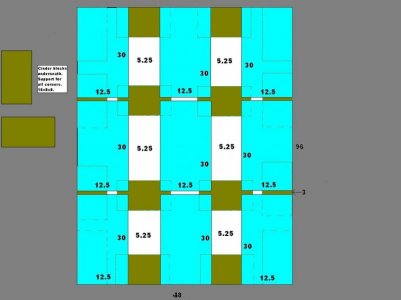This week I'll be setting up all of my clown tanks on the same system. I was curious about some things.
1. Most books say that the larger clowns need 40gl or more - yet most people I've talked with say that they keep clarkiis and maroons and their ilk in 20gl. What is the general consensus here? Currenly most of my clowns are in 29gl with a couple of sets in 20 gl and one in a 10gl (ocellaris).
1A. And if you do use 20 are you using 20L or 20H?
1B. And does this question make a difference using a stand alone tank versus one in a system? In other words - do they need 40gl in stand alone but only 20 gl in an adequate system?
2. Can your standard 20L or 20H tank be drilled? They don't usually advertise themselves as tempered or regular glass.
3. This is a long shot: everything I've looked into says to use the water from the broodstock tank for the fry. What if I were to put the 5 or 10 gl tanks or buckets used for larvae in line with the broodstock tanks? It would help with water changes as I'd just need to vacuum the bottom of those tanks. Puting a panty-hose thing or something over the overflow will prevent escape. The system will have the added benefit of including all three filtration methods. The plan would be to put them in line and open the valve just slightly so that the puts an extremely gentle flow into the tank. The water would be aimed at the bottom of the tank in hopes to keep the rotifers suspended.
4. It seems that the growing trend is to ditch the whole Nanno idea in favor of enriched rotifer pre-made diets. More fragile, but certainly easier than keeping a nanno culture going since they die even faster than rotifers. Is that the case with you folks?
5. Last question - promise! My plan is to use one tank as my biological filtration tank. I'll be putting all of the live rock currently in the tanks into that tank, along with a sand bed (shallow or deep?). This will leave nothing but a flower pot in each tank. Would they need anything more than that? And do you veterans keep any anemones in your tanks?
1. Most books say that the larger clowns need 40gl or more - yet most people I've talked with say that they keep clarkiis and maroons and their ilk in 20gl. What is the general consensus here? Currenly most of my clowns are in 29gl with a couple of sets in 20 gl and one in a 10gl (ocellaris).
1A. And if you do use 20 are you using 20L or 20H?
1B. And does this question make a difference using a stand alone tank versus one in a system? In other words - do they need 40gl in stand alone but only 20 gl in an adequate system?
2. Can your standard 20L or 20H tank be drilled? They don't usually advertise themselves as tempered or regular glass.
3. This is a long shot: everything I've looked into says to use the water from the broodstock tank for the fry. What if I were to put the 5 or 10 gl tanks or buckets used for larvae in line with the broodstock tanks? It would help with water changes as I'd just need to vacuum the bottom of those tanks. Puting a panty-hose thing or something over the overflow will prevent escape. The system will have the added benefit of including all three filtration methods. The plan would be to put them in line and open the valve just slightly so that the puts an extremely gentle flow into the tank. The water would be aimed at the bottom of the tank in hopes to keep the rotifers suspended.
4. It seems that the growing trend is to ditch the whole Nanno idea in favor of enriched rotifer pre-made diets. More fragile, but certainly easier than keeping a nanno culture going since they die even faster than rotifers. Is that the case with you folks?
5. Last question - promise! My plan is to use one tank as my biological filtration tank. I'll be putting all of the live rock currently in the tanks into that tank, along with a sand bed (shallow or deep?). This will leave nothing but a flower pot in each tank. Would they need anything more than that? And do you veterans keep any anemones in your tanks?
Last edited:

